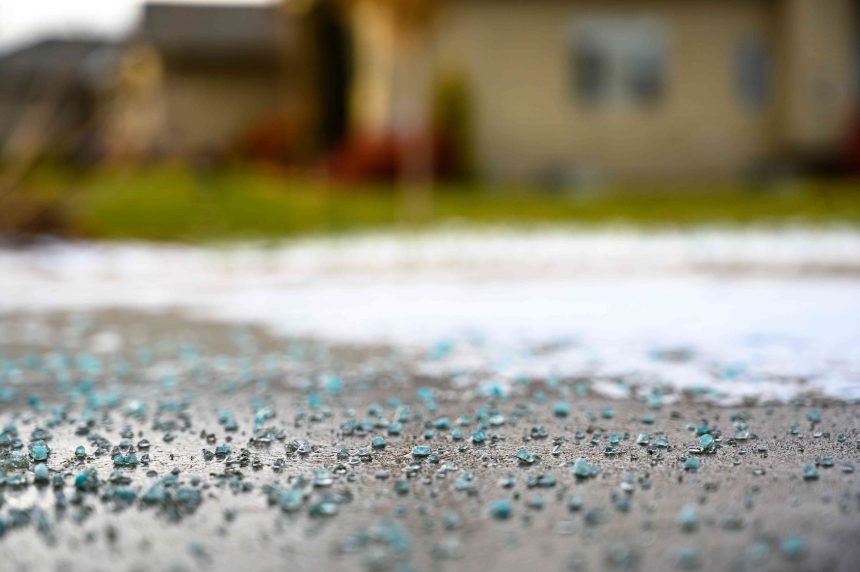Rock salt and other deicers are often sprinkled across sidewalks in winter and applied to roadways to keep ice from building up and causing slips and slides. While deicers are frequently necessary for safety reasons, these products can damage your plants, causing lawns and ornamentals to turn brown and die back. To ensure your plants make it through the winter unscathed, here’s what you can do to prevent salt damage. Plus, find tips on recognizing salt damage on plants and what to do to fix the problem.
Signs of Salt Damage
Salt causes plant leaves to dry out and makes it harder for plant roots to absorb the moisture and nutrients they need. However, salt damage usually doesn’t show up right away, and you may only notice that your plants are stressed when they leaf out in spring or when the weather is hot and dry in summer. Salt damage is easy to confuse with water stress, and it can result in any or all of the following symptoms:
- Browning leaves or needles. When exposed to too much salt, plants may lose their ability to produce chlorophyll and photosynthesize. This can cause plants to turn completely brown, or the browning may be limited to leaf tips or the side of the plant that’s facing the salty roadway or sidewalk.
- Branch dieback. Salt can burn plant tissue and make branches and twigs drop off or dry out. Affected plants may also develop a stunted or scorched look.
- Premature leaf drop and wilting. Salt-damaged plants often lose their ability to absorb moisture effectively, which can cause them to wilt quickly in hot weather or lose leaves early in fall.
- Nutrient deficiencies. When salty water is absorbed into the soil, sodium ions displace nutrients such as potassium and phosphorus, interfering with beneficial microbes. This can lead to yellowing leaves and other signs of nutrient deficiencies.
- Reduced fruiting or flowering. Salt exposure may also dry out flower and leaf buds and interfere with flowering and fruiting the following season.
Treating and Preventing Salt-Damaged Plants
Even if you don’t apply salt to your driveway or walking areas, your plants aren’t necessarily safe from damage. Salt damage commonly occurs when salty slush splashes up on leaves from nearby roadways or when runoff from melted snow pools around plants and soaks into the soil. However, by taking a few precautions, you can keep salt from damaging your plants and fix overly salty soil.
1. Plant in the Right Spot
One of the best ways to avoid problems with road salt and ice melt is to not grow plants near roadways or in areas where deicers are used. While you’re at it, avoid planting salt-sensitive plants in locations where snow from roadways or sidewalks is likely to melt. Melted snow and runoff can harbor a lot of salt and damage plant roots.
2. Shovel Wisely
If you’ve applied salt to your driveway or walking paths, pay attention to where you shovel your snow, and don’t mound salty snow piles near plants you care about. Not only will those piles of snow weigh your plants down, but they may also cause salt to build up in the soil when they melt.
3. Use Less Salt
Rock salt or sodium chloride is the most common deicer used on roadways and sidewalks; however, this product is known to damage plants. If possible, replace rock salt with salt-free deicers or swap out some of the salt for salt-free grit, such as sand, gravel, sawdust, or kitty litter. Although grit products don’t melt ice, they make paved surfaces less slippery and can reduce the need for salty deicers.
If you use rock salt or similar deicers on your property, use targeted applications and avoid applying deicing products to the soil or near your plants. Also, keep in mind that rock salt is more likely to damage plants when it’s applied in late winter.
4. Install Barriers
Many gardeners wrap cold-sensitive shrubs with burlap in fall to prevent winter damage. You can also use burlap wrappings and mulch—as well as plastic, metal, or wood barriers installed in the “spray zone” near roadways—to keep splashes of salty water from reaching your plants. Remove the burlap and other coverings when your plants start growing in spring.
5. Choose Salt-Tolerant Plants
Plants like viburnum, boxwood, red twig dogwood, and serviceberry react badly to salty soil. However, some plants are naturally more tolerant to road salt, and growing these hardy plants can make gardening near roadways a lot easier. While you can find lots of salt-tolerant trees, shrubs, and other ornamentals, some particularly popular choices include:
Keep in mind that “salt tolerant” doesn’t mean “salt resistant.” Even salt-tolerant plants can be damaged by salt if they’re exposed to too much of it.
6. Rinse with Water
If road salt or salt spray ends up in your garden, you can usually fix your soil and plants before any severe damage is done. To start, wait until the ground thaws in spring, and then leach excess salt away by slowly and deeply watering any areas of your garden or lawn where salt may have built up. When it gets warmer, rinse the leaves and stems of any plants growing near roadways and sidewalks.
7. Improve Drainage
Leaching salt away with water can limit salt issues, but if a lot of road salt has built up in your soil, it can draw water away from plant roots and cause drainage issues and soil compaction. Fix these problems by blending compost or aged manure into affected garden beds.
8. Prune Damage
Even with our best efforts, plants can sometimes sustain salt damage and start to brown, but don’t despair. Once you reduce the salt build-up in your soil, prune those damaged leaves and branches away, and your plants should produce fresh growth in no time.







